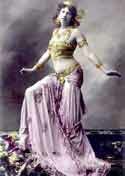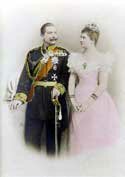Senegalese soldiers have found billets in a shack near the frontline
Senegal was a French colony. Picture made in June 1917 in Saint-Ulrich, Northern France.
![]() Click on one of the small photo's below - and you'll get the full picture.
Click on one of the small photo's below - and you'll get the full picture.
 |
More North African soldiers
In total the French colonies donated 587,000 soldiers to the warfare. Almost 520,000 of them fought on European soil. The Germans feared them. |
|
 |
Impetuous Algerians
Algerian soldiers, nicknamed the Terrible Turcos. |
|
 |
Operating On A Horse
The courtyard of a smithy serves as operating room for this French army horse. |
|
 |
A Neutral Horse
A military shoeing-smith giving a horse a shoe. |
|
 |
Prisoners-Of-War in Russia
Russian photographer Sergei Mikhailovich Prokudin-Gorskiipictured these Austrian prisoners-of-war in 1915 in the region of Karelia. |
|
 |
Handcar
Patrol on a handcar outside Petrozavodsk on the Murmansk railway, Russia, 1915. |
|
 |
Parade in the Desert
The Australian Light Horse Brigade on parade in the desert, Palestine, 1918 |
|
 |
Light Horseman Picking Flowers
A soldier of the Australian Light Horse Brigade gathers anemones. |
|
 |
Camel Ambulances
Another picture by Frank Hurley. |
|
 |
Fresh Drink
Welcome stop for the Imperial Camel Corps. |
|
 |
The Sound of a Gun
You can almost hear the sound of this French gun, photographed near Arras in Northern France. |
|
 |
Le Déjeuner sur l'Herbe
It looks like a painting by impressionist Edouard Manet, but it is a real color picture, made in 1914,by Jean-Baptiste Tournassoud, Commander of the Photography and Cinematography Section of the French Army. |
|
 |
Brothers in Arms
Frères d'Armes, brothers in arms, is the text on this French postcard. |
|
 |
Flying Pig
Anzac soldiers (from Australia and New Zealand) are loading a trench mortar. |
|
 |
Firing From A Trench
German postcard with this text on the backside: Im Schützengraben Während eindes Schweren Gefechts: In the trenches during a heavy fight. |
|
 |
Field Hospital
A German Feld Lazaret (field hospital) in the Champagne area, in Northern France, 1916. |
|
 |
Kriegsgefangenen
German postcard published April 1915. |
|
 |
Cooking For Soldiers
Is this a photograph or a painting? Hard to tell, maybe a combination. |
|
 |
Ambush
From the same series. According to the text these soldiers are lying in ambush near the river Yser. |
|
 |
Beautiful
Mata Hari is known as one the most beautiful and intriguing spies in history. |
|
 |
Lusitania Torpedoed
German postcard depicting the torpedoing of Lusitania. |
|
 |
Wilhelm und Auguste
German emperor Wilhelm II and his wife Auguste Viktoria |
|
 |
Changing of the Guards in Berlin
The German emperor loved ceremonies as much as his opponents. |
|
 |
Ready
Another German postcard. According to the text it shows a "trench near a border". |
![]() Click on a number for the other pages with color pictures: 0 - 1 - 2 - 3 - 4 - 5 - 6 - 7 - 8 - 9
Click on a number for the other pages with color pictures: 0 - 1 - 2 - 3 - 4 - 5 - 6 - 7 - 8 - 9
![]() Or go straight to the frontpage of The Heritage of the Great War
Or go straight to the frontpage of The Heritage of the Great War
Sources: Most of the pictures above come from our own collection. Others were found in books, and a few elsewhere on the Internet - RR.